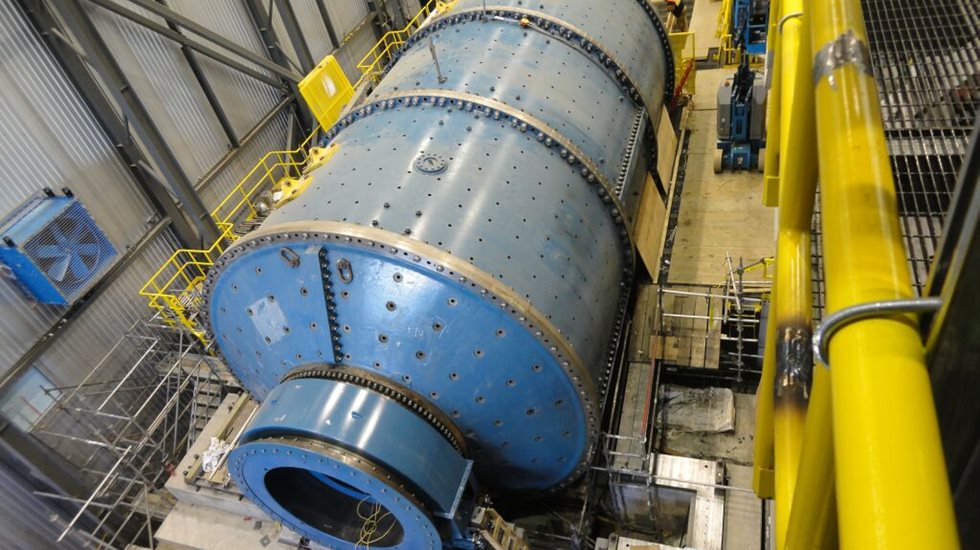From a distance, a grinding mill may not be an impressive piece of machinery. At first glance, all it seems to do is turn and turn at a constant speed. However, grinding mills play a critical role in minerals processing, with large mills often processing over $1 million worth of ore per day. With grinding equipment operating around the clock, any revenues lost due to a mechanical failure are lost forever and can severely impact a mine’s bottom line.
Every grinding mill part has a role
Large grinding equipment is typically split into multiple segments or cans in order to make their manufacturing and transport to a mine site feasible. For example, a large 40 foot diameter SAG mill without liners weighs in excess of 3.6 million lbs (1.6 million kg), making it impossible to make, ship, or lift this equipment in one piece. Smaller segments can be assembled at the mine site either through field welding or through bolting. At assembly, each part, whether it is big or small must come together perfectly so that the mill can perform as designed.
Bolting has traditionally been the choice of joining multiple mill segments as it is quicker to implement than other methods. It allows for disassembly of components in case of wear and tear (such as when replacing worn trunnions, or damaged gears) and also avoids the need for welding in the field which cannot be as well controlled (in comparison to welding, heat treating, and machining done in a machine shop). Field welding will always cause distortions due to high heat input, which can cause issues during assembly.
The magic of bolting
Bolting is magical. But it is only magical if designed and executed correctly. The basic principle of bolting is always to ensure metal to metal contact between the mating parts. Why is bolting magical? Imagine you close a spring-loaded umbrella. You are doing work in doing so. When it starts to rain, you push a button on the umbrella, and with very little effort, it opens like magic. This concept is similar to preloading bolts when assembling a mill. When you tighten the bolts, you compress the flanges (i.e. the clamped parts), and when the mill is running, any additional load on the joint will be partially distributed to further stretch the bolt, and partially to relax the joint. With some simplifications, we can mathematically show that the bolt will only see a fraction of the applied load, in the order of 15%. This is because the stiffness of the flanges (which is a function of the clamped area) is much higher than the stiffness of the bolts (which is a function of the bolt’s cross-sectional area).
These two components (flanges and bolts) are thus connected in parallel and share the load roughly in proportions of 15% (bolts) and 85% (flanges). If the bolt preload is lost for whatever reason, then the bolt starts seeing 100% of the applied load.
Another factor to consider is that bolts need to be preloaded properly such that they perform well under fatigue. In engineering terms, an infinite life is considered as over 10 million stress cycles. A typical medium size grinding mill undergoes over 5 million revolutions per year. A mill, therefore, needs to be designed for infinite life otherwise it could fail within two years. The bolts holding the mill segments together play a critical role and must withstand the high levels of alternating loads placed on them.

